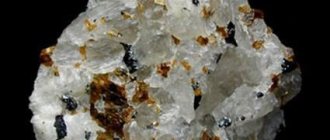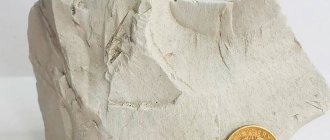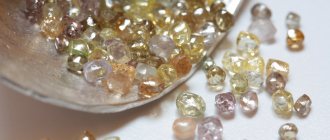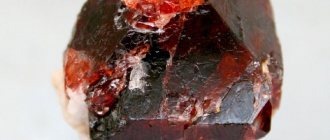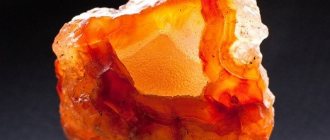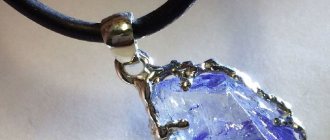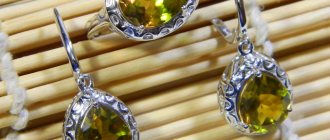Zirconium, properties of the atom, chemical and physical properties.
Zr 40 Zirconium
91.224(2) 1s2 2s2 2p6 3s2 3p6 3d10 4s2 4p6 4d2 5s2
Zirconium is an element of the periodic system of chemical elements of D.I. Mendeleev with atomic number 40. It is located in the 4th group (according to the old classification - a secondary subgroup of the fourth group), the fifth period of the periodic system.
Zirconium atom and molecule. Zirconium formula. Structure of the zirconium atom
Isotopes and modifications of zirconium
Properties of zirconium (table): temperature, density, pressure, etc.
Physical properties of zirconium
Chemical properties of zirconium. Interaction of zirconium. Chemical reactions with zirconium
Obtaining zirconium
Applications of zirconium
Table of chemical elements D.I. Mendeleev
Application
Zirconium began to be widely used in industry in the 30s of the 20th century. The limited use of zirconium is due to its high cost.
Due to their high melting point, metal zirconium and its alloys are used in nuclear energy for the manufacture of parts and structures of nuclear reactors. Zirconium is used to alloy steels, produce superconductors, acid-resistant reactors, fittings, pumps, and utensils. The production of pyrotechnics is necessary without zirconium, because it is capable of burning in oxygen at a high speed without smoke and emitting a significant amount of light. This metal is also used in medicine to create surgical instruments, bone, joint and dental prostheses. The bioinertness of zirconium allows it to serve as an alternative to titanium in the manufacture of dental implants.
Zirconium oxide is used in the production of refractories for the metallurgical industry, ceramic-metal coatings, and imparting whiteness and opacity to enamels. Also associated with zirconium oxide is the production of cubic zirconia, which is used for lenses, surgical instruments, jewelry stones, synthetic fibers and wire. Zirconium diboride is associated with the production of cutters for processing parts, the hydride is used in nuclear technology to moderate neutrons, and nitride is used for coatings in dentistry and jewelry.
Zirconium atom and molecule. Zirconium formula. Structure of the zirconium atom:
Zirconium (lat. Zirconium, found in the mineral zircon, which gave the element its name) is a chemical element of D. I. Mendeleev’s periodic system of chemical elements with the designation Zr and atomic number 40. Located in the 4th group (according to the old classification - a secondary subgroup of the fourth group ), fifth period of the periodic table.
Zirconium is a metal. Belongs to the group of transition metals.
Zirconium is designated by the symbol Zr.
As a simple substance, zirconium under normal conditions is a ductile, shiny metal of silver-gray color.
The zirconium molecule is monatomic.
Chemical formula of zirconium Zr.
The electronic configuration of the zirconium atom is 1s2 2s2 2p6 3s2 3p6 3d10 4s2 4p6 4d2 5s2. The ionization potential (first electron) of the zirconium atom is 640.1 kJ/mol (6.634126(5) eV).
Structure of the zirconium atom. The zirconium atom consists of a positively charged nucleus (+40), around which 40 electrons move through five shells. In this case, 38 electrons are in the internal level, and 2 electrons are in the external level. Since zirconium is located in the fifth period, there are only five shells. First, the inner shell is represented by the s-orbital. The second - the inner shell is represented by s- and p-orbitals. The third and fourth - inner shells are represented by s-, p- and d-orbitals. The fifth - outer shell is represented by the s-orbital. At the internal energy level of the zirconium atom, there are two unpaired electrons in the 4d orbital. At the outer energy level of the zirconium atom, there are two paired electrons in the s orbital. In turn, the nucleus of a zirconium atom consists of 40 protons and 51 neutrons. Zirconium belongs to the elements of the d-family.
The radius of the zirconium atom (calculated) is 206 pm.
The atomic mass zirconium atom is 91.224(2) a. eat.
History of the origin of zirconium
Natural gemstones similar to the name zirconium, zircons, have been used for a long time. They were called imperfect diamonds, and the dark red ones were called hyacinths. According to legend, these are hardened drops of the blood of Hyacinth, killed by the god Zephyr. In a Russian fairy tale, the scarlet flower is the name given to a flower carved from burgundy zircon.
In the Middle Ages they were called killer gems. It was noticed: the owner began to get sick when wearing dark-colored large stones, then died. This happened due to the use of radioactive minerals. Such zircons cannot be used now.
History of the synthesis of zirconium metal:
- 1789 – M. Klaproth first isolated zircon oxide from mineral powder;
- 1824 – J. Berzelius formed free zirconium;
- 1925 – A. Arkel purified the element from radioactive impurities.
Researchers classify zirconium dioxide as a metal with improved properties. It is suitable for the manufacture of bone plates, crowns, and other medical structures. The products are safe and not contraindicated for MRI.
Watch a video about zirconium metal:
Properties of zirconium (table): temperature, density, pressure, etc.:
Detailed information on the website ChemicalStudy.ru
| 100 | General information | |
| 101 | Name | Zirconium |
| 102 | Former name | |
| 103 | Latin name | Zirconium |
| 104 | English name | Zirconium |
| 105 | Symbol | Zr |
| 106 | Atomic number (number in table) | 40 |
| 107 | Type | Metal |
| 108 | Group | Transition metal |
| 109 | Open | Martin Heinrich Klaproth, Germany, 1789 |
| 110 | Opening year | 1789 |
| 111 | Appearance, etc. | Ductile, shiny silver-gray metal |
| 112 | Origin | Natural material |
| 113 | Modifications | |
| 114 | Allotropic modifications | 3 allotropic modifications: – α-zirconium with a hexagonal close-packed crystal lattice, – β-zirconium with a cubic body-centered crystal lattice, – ω-zirconium with a hexagonal crystal lattice |
| 115 | Temperature and other conditions for the transition of allotropic modifications into each other | |
| 116 | Bose-Einstein condensate | |
| 117 | 2D materials | |
| 118 | Content in the atmosphere and air (by mass) | 0 % |
| 119 | Content in the earth's crust (by mass) | 0,013 % |
| 120 | Content in seas and oceans (by mass) | 2,6·10-9 % |
| 121 | Content in the Universe and space (by mass) | 5,0·10-6 % |
| 122 | Abundance in the Sun (by mass) | 4,0·10-6 % |
| 123 | Content in meteorites (by mass) | 0,00066 % |
| 124 | Content in the human body (by weight) | 5,0·10-6 % |
| 200 | Properties of the atom | |
| 201 | Atomic mass (molar mass) | 91.224(2) a. e.m. (g/mol) |
| 202 | Electronic configuration | 1s2 2s2 2p6 3s2 3p6 3d10 4s2 4p6 4d2 5s2 |
| 203 | Electronic shell | K2 L8 M18 N10 O2 P0 Q0 R0 |
| 204 | Atomic radius (calculated) | 206 pm |
| 205 | Empirical atomic radius* | 155 pm |
| 206 | Covalent radius* | 148 pm |
| 207 | Ion radius (crystalline) | Zr4+ 73 (4) pm, 86 (6) pm, 98 (8) pm (in parentheses the coordination number is indicated - a characteristic that determines the number of nearest particles (ions or atoms) in a molecule or crystal) |
| 208 | Van der Waals radius | |
| 209 | Electrons, Protons, Neutrons | 40 electrons, 40 protons, 51 neutrons |
| 210 | Family (block) | d-family element |
| 211 | Period in the periodic table | 5 |
| 212 | Group on the periodic table | 4th group (according to the old classification - a secondary subgroup of the 4th group) |
| 213 | Emission spectrum | |
| 300 | Chemical properties | |
| 301 | Oxidation states | -2, +1, +2, +3, +4 |
| 302 | Valence | II, III, IV |
| 303 | Electronegativity | 1.33 (Pauling scale) |
| 304 | Ionization energy (first electron) | 640.1 kJ/mol (6.634126(5) eV) |
| 305 | Electrode potential | Zr4+ + 4e– → Zr, Eo = -1.539 V |
| 306 | Electron affinity energy of an atom | 41.1 kJ/mol |
| 400 | Physical properties | |
| 401 | Density* | 6.52 g/cm3 (at 20 °C and other standard conditions , state of matter – solid), 5.8 g/cm3 (at melting point 1855 °C and other standard conditions , state of matter – liquid) |
| 402 | Melting temperature* | 1855 °C (2128 K, 3371 °F) |
| 403 | Boiling temperature* | 4377 °C (4650 K, 7911 °F) |
| 404 | Sublimation temperature | |
| 405 | Decomposition temperature | |
| 406 | Self-ignition temperature of a gas-air mixture | |
| 407 | Specific heat of fusion (enthalpy of fusion ΔHpl)* | 14 kJ/mol |
| 408 | Specific heat of evaporation (enthalpy of boiling ΔHboiling)* | 591 kJ/mol |
| 409 | Specific heat capacity at constant pressure | |
| 410 | Molar heat capacity* | 25.36 J/(K mol) |
| 411 | Molar volume | 14.1 cm³/mol |
| 412 | Thermal conductivity | 22.6 W/(mK) (at standard conditions ), 22.7 W/(mK) (at 300 K) |
| 500 | Crystal cell | |
| 511 | Crystal grid #1 | α-zirconium |
| 512 | Lattice structure | Hexagonal close-packed |
| 513 | Lattice parameters | a = 3.231 Å, c = 5.148 Å |
| 514 | c/a ratio | 1,593 |
| 515 | Debye temperature | 291 K |
| 516 | Name of space symmetry group | P63/mmc |
| 517 | Symmetry space group number | 194 |
| 521 | Crystal grid #2 | β-zirconium |
| 522 | Lattice structure | Cubic body-centered |
| 523 | Lattice parameters | a = 3.61 Å |
| 524 | c/a ratio | |
| 525 | Debye temperature | |
| 526 | Name of space symmetry group | Im_ 3m |
| 527 | Symmetry space group number | 229 |
| 900 | additional information | |
| 901 | CAS number | 7440-67-7 |
Note:
205* The empirical radius of the zirconium atom according to [1] and [3] is 160 pm.
206* The covalent radius of zirconium according to [1] and [3] is 175±7 pm and 145 pm, respectively.
401* The density of zirconium according to [3] and [4] is 6.506 g/cm3 (at 0 °C and other standard conditions , the state of matter is a solid) and 6.45 g/cm3 (at 20 °C and other standard conditions , state of matter – solid) respectively.
402* The melting point of zirconium according to [3] is 1851.85 °C (2125 K, 3365.33 °F).
403* The boiling point of zirconium according to [4] is 4320 °C (4593.15 K, 7808 °F).
407* The specific heat of fusion (enthalpy of fusion ΔHmelt) of zirconium according to [3] and [4] is 19.2 kJ/mol and 14.6 kJ/mol, respectively.
408* The specific heat of evaporation (boiling enthalpy ΔHboiling) of zirconium according to [3] and [4] is 567 kJ/mol and 557.7 kJ/mol, respectively.
410* The molar heat capacity of zirconium according to [3] is 25.3 J/(K mol).
Zirconium
Zirconium
40
| Yttrium ← Zirconium → Niobium | |
| Ti↑ Zr ↓Hf | 40Zr |
(molar mass) 91.224(2)[1] a. e.m. (g/mol) Electronic configuration [Kr] 4d2 5s2 Atomic radius 160 pm Chemical properties Covalent radius 145 pm Ion radius (+4e)79 pm Electronegativity 1.33 (Pauling scale) Electrode potential 0 Oxidation states 0, +1, +2, +3, +4 Ionization energy
(first electron) 659.7 (6.84) kJ/mol (eV) Thermodynamic properties of a simple substance Density(atn. u. ) 6.506 g/cm³ Melting temperature 2125 K Boiling temperature 4650 K Heat of Melting 19.2 kJ/mol Heat of vaporization 567 kJ/mol Molar heat capacity 25.3[2] J/(K mol) Molar volume 14.1 cm³/mol Crystal lattice of a simple substance Lattice structure hexagonal Lattice parameters a=3.231 c=5.148 Å c/a ratio 1,593 Debye temperature 291 K Other characteristics Thermal conductivity (300 K) 22.7 W/(m K)
| 40 | Zirconium |
| Zr 91,224 | |
| 4d 2 5s 2 | |
Zirconium
(lat.
Zirconium
; denoted by the symbol
Zr
) - an element of the secondary subgroup of the fourth group of the fifth period of the periodic system of chemical elements of D. I. Mendeleev, with atomic number 40. The simple substance
zirconium
(CAS number: 7440-67-7) is a shiny silvery metal - gray color. It has high ductility and is resistant to corrosion. It exists in two crystalline modifications: α-Zr with a hexagonal lattice of the magnesium type, β-Zr with a cubic body-centered lattice of the α-Fe type, the α↔β transition temperature is 863 °C [2].
- 6.1 Zirconium metal and its alloys
6.1.1 Nuclear power
History and origin of the name
Zirconium
in the form of dioxide was first isolated in 1789 by the German chemist M. G. Klaproth as a result of analysis of the mineral zircon.
Zirconium was first isolated in its free form by the Swedish chemist Berzelius in 1824. Pure zirconium free from impurities was obtained only at the beginning of the twentieth century [3].
The origin of the word zircon
dont clear. It may come from the Arabic zarkûn (cinnabar) or from the Persian zargun (golden color).
Being in nature
Zirconium compounds are widespread in the lithosphere. According to various sources, the clarke of zirconium is from 170 to 250 g/t. Concentration in sea water is 5·10−5 mg/l [4]. Zirconium is a lithophile element. In nature, its compounds are known exclusively with oxygen in the form of oxides and silicates. Despite the fact that zirconium is a trace element, there are about 40 minerals in which zirconium is present in the form of oxides or salts. Most common in nature are zircon (ZrSiO4)(67.1% ZrO2), baddeleyite (ZrO2) and various complex minerals (eudialyte (Na, Ca)5(Zr, Fe, Mn)[O,OH,Cl][Si6O17] and etc.). In all terrestrial deposits, zirconium is accompanied by Hf, which enters zircon minerals due to isomorphic substitution of the Zr atom.
Zircon is the most common zirconium mineral. It is found in all types of rocks, but mainly in granites and syenites. In Ginderson County (North Carolina), zircon crystals several centimeters long were found in pegmatites, and crystals weighing kilograms were discovered in Madagascar.
Baddeleyite was discovered by Yussac in 1892 in Brazil, the main deposit being in the Pocos de Caldas area. A block of baddeleyite weighing about 30 tons was found there, and in water streams and along the cliff, baddeleyite is found in the form of alluvial pebbles with a diameter of up to 7.5 mm, known as favas (from Portuguese fava
- bob). Favas typically contains over 90% zirconium dioxide[5].
Place of Birth
The largest zirconium deposits are located in the USA, Australia, Brazil, and India[6].
In Russia, which accounts for 10% of the world's zirconium reserves (3rd place in the world after Australia and South Africa), the main deposits are: Kovdorskoye primary baddelite-apatite-magnetite in the Murmansk region, Tugansky alluvial zircon-rutile-ilmenite in the Tomsk region, Central placer zircon-rutile-ilmenite in the Tambov region, Lukoyanovskoye placer zircon-rutile-ilmenite in the Nizhny Novgorod region, Katuginskoye primary zircon-pyrochlore-cryolite in the Chita region and Ulug-Tanzekskoye primary zircon-pyrochlore-columbite[7].
Receipt
In industry, the starting materials for the production of zirconium are zirconium concentrates with a mass content of zirconium dioxide of at least 60-65%, obtained by enriching zirconium ores.
The main methods for obtaining zirconium metal from concentrates are chloride, fluoride and alkaline processes.
The chloride process is based on the conversion of zirconium into volatile tetrachloride ZrCl4 (Tsublimation 331 °C) with its further purification and subsequent metallothermic reduction of magnesium into zirconium sponge. Two options for chlorination of concentrates are used: direct chlorination of a mixture of zirconium concentrates with coke is chlorinated at 900–1000 °C and chlorination of a mixture of zirconium carbides and carbonitrides previously obtained by sintering with coke at 400–900 °C:
In the fluoride method, at the first stage, the zirconium concentrate is sintered with potassium hexafluorosilicate at 600-700 °C:
The resulting potassium hexafluorozirconate is leached with hot water and purified by fractional recrystallization from the impurity of hexafluorozirconate K2HfF6, after which metallic zirconium is obtained by electrolysis of a melt mixture of potassium hexafluorozirconate and potassium and sodium chlorides.
The alkaline process is a method for producing commercially pure zirconium dioxide ZrO2, from which metallic zirconium is obtained by the chloride or fluoride method. In this process, zirconium is converted into a soluble form by sintering the concentrate with sodium hydroxide at 600–650 °C, sodium carbonate at 900–1100 °C, or with a mixture of carbonate and calcium chloride at 1000–1300 °C, after which the resulting sodium zirconates Na2ZrO3 or calcium CaZrO3 is leached with hydrochloric or sulfuric acids:
Aqueous solutions of zirconyl chloride or sulfate are further purified and hydrolyzed, the ZrO(OH)2 precipitate is calcined and technical zirconium dioxide ZrO2 is obtained.
Physicochemical characteristics
Zirconium is a shiny silver-gray metal. Exists in two crystal modifications:
- α-Zr - with a magnesium-type hexagonal lattice (a = 3.231 Å; c = 5.146 Å; z = 2; space group P63/mmc
)
- β-Zr - with a body-centered cubic lattice of the α-Fe type (a = 3.61 Å; z = 2; space group Im3m
). The α ↔ β transition occurs at 863 °C, the ΔH of the transition is 3.89 kJ/mol. Additions of Al, Sn, Pb, Cd increase, and Fe, Cr, Ni, Mo, Cu, Ti, Mn, Co, V and Nb decrease the transition temperature [2].
The density of α-zirconium at 20 °C is 6.5107 g/cm³; melting temperature Tmelt - 1855 °C[2]; boiling point Tbp - 4409 °C; specific heat capacity (25-100 °C) 0.291 kJ/(kg K) or 0.0693 cal/(g °C), thermal conductivity (50 °C) 20.96 W/(m K) or 0.050 cal /(cm·sec·°C); temperature coefficient of linear expansion (20-400 °C) 6.9·10−6; electrical resistivity of high purity zirconium (20 °C) 44.1 μΩ cm. the temperature of transition to the superconducting state is 0.7 K[8].
Zirconium is paramagnetic; The specific magnetic susceptibility increases with heating and at −73 °C it is 1.28·10−6, and at 327 °C it is 1.41·10−6. The thermal neutron capture cross section is 0.18·10−28 m² (0.18 barn), the hafnium admixture increases this value, so zirconium, well purified from hafnium, is used for the manufacture of fuel rods. Pure zirconium is ductile and easily amenable to cold and hot processing (rolling, forging, stamping). The presence of small amounts of oxygen, nitrogen, hydrogen and carbon dissolved in the metal (or compounds of these elements with zirconium) causes the fragility of zirconium. Elastic modulus (20 °C) 97 GN/m² (9700 kgf/mm²); tensile strength 253 MN/m² (25.3 kgf/mm²); Brinell hardness 640-670 MN/m² (64-67 kgf/mm²); The oxygen content has a very strong influence on the hardness: at a concentration of more than 0.2%, zirconium cannot be cold worked.
The external electronic configuration of the zirconium atom is 4d25s2. Zirconium has an oxidation state of +4. Lower oxidation states +2 and +3 are known for zirconium only in its compounds with chlorine, bromine and iodine.
Compact zirconium slowly begins to oxidize within 200–400 °C, becoming covered with a film of zirconium dioxide ZrO2; above 800 °C vigorously interacts with air oxygen. Powdered metal is pyrophoric - it can ignite in air at ordinary temperatures. Zirconium actively absorbs hydrogen already at 300 °C, forming a solid solution and hydrides ZrH and ZrH2; at 1200–1300 °C in a vacuum, the hydrides dissociate and all hydrogen can be removed from the metal. With nitrogen, zirconium forms ZrN nitride at 700–800 °C. Zirconium reacts with carbon at temperatures above 900 °C to form ZrC carbide. Carbide
and
zirconium nitride
- solid refractory compounds;
zirconium carbide
is an intermediate product for the production of ZrCl4 chloride. Zirconium reacts with fluorine at ordinary temperatures, and with chlorine, bromine and iodine at temperatures above 200 °C, forming higher halides ZrHal4 (where Hal is a halogen).
Zirconium is stable in water and water vapor up to 300 °C; at higher temperatures (starting from approximately 700 °C) an exothermic zirconium-steam reaction begins
Zr + 2H2O = ZrO2 + 2H2,
which is important in the development of accidents in nuclear reactors with water coolant and/or moderator[9].
Does not react with hydrochloric and sulfuric (up to 50%) acids, as well as with alkali solutions (zirconium is the only metal that is resistant to alkalis containing ammonia). It reacts with nitric acid and aqua regia at temperatures above 100 °C. Dissolves in hydrofluoric and hot concentrated (above 50%) sulfuric acids. Salts of the corresponding acids of different compositions, depending on the concentration of the acid, can be isolated from acidic solutions. Thus, Zr(SO4)2·4H2O crystalline hydrate is precipitated from concentrated zirconium sulfate solutions; from dilute solutions - basic sulfates of the general formula x
ZrO2
y
SO3
z
H2O (where
x
:
y
> 1).
Zirconium sulfates at 800–900 °C completely decompose to form zirconium dioxide. Zr(NO3)4 5H2O or ZrO(NO3)2 x
H2O (where
x
= 2-6) crystallizes from nitric acid solutions; ZrOCl2 8H2O crystallizes from hydrochloric acid solutions, which is dehydrated at 180–200 °C.
Biological role and physiological effect
Zirconium does not play a biological role in the body. Metallic zirconium and its insoluble compounds (oxide, silicate) have high biological inertness (the property of not interacting with tissues and body fluids due to chemical resistance). Nothing is known about the effects of zirconium compounds on the body. Zirconium dust is a substance with a high fire and explosion hazard, since it can spontaneously ignite in air.
Zirconium bracelets, advertised by V. Kikabidze and supposedly lowering blood pressure, do not have a real therapeutic effect [10], their possible subjective effect is explained by the placebo effect.
Application of zirconium and its compounds
Zirconium has been used in industry since the 30s of the 20th century. Due to its high cost, its use is limited.
The only enterprise specializing in the production of zirconium in Russia (and in the territory of the former USSR) is the Chepetsk Mechanical Plant (Glazov, Udmurtia). Zirconium is also produced in Ukraine by the State Research and Production Enterprise "Zirconium", in the city of Dneprodzerzhinsk, Dnepropetrovsk region.
Metal zirconium and its alloys
Nuclear energy
Zirconium has a very small thermal neutron capture cross section and a high melting point. Therefore, metallic zirconium, which does not contain hafnium, and its alloys are used in nuclear energy for the manufacture of fuel elements, fuel assemblies and other structures of nuclear reactors.
Alloying
In metallurgy it is used as an alloy. A good deoxidizer and denitrogenizer, superior in efficiency to Mn, Si, Ti. Alloying steels with zirconium (up to 0.8%) increases their mechanical properties and machinability. It also makes copper alloys more durable and heat-resistant with a slight loss of electrical conductivity.
Pyrotechnics
Zirconium has a remarkable ability to burn in air oxygen (self-ignition temperature - 250 ° C) with virtually no smoke and at high speed. In this case, the highest temperature for metal combustibles develops (4650 °C). Due to the high temperature, the resulting zirconium dioxide emits a significant amount of light, which is used very widely in pyrotechnics (production of fireworks and fireworks), the production of chemical light sources used in various fields of human activity (torches, flares, flare bombs, FOTAB - photo air bombs; widely used in photography as part of disposable flash lamps until it was replaced by electronic flashes). For use in this area, not only zirconium metal is of interest, but also its alloys with cerium, which provide a significantly higher luminous flux. Powdered zirconium is used in a mixture with oxidizing agents (Berthollet salt) as a smokeless agent in pyrotechnic signal lights and fuses, replacing fulminate of mercury and lead azide. Successful experiments were carried out on the use of zirconium combustion as a light source for pumping a laser.
Superconductor
Superconducting alloy of 75% Nb and 25% Zr (superconductivity at 4.2 K) withstands loads up to 100,000 A/cm².
Construction material
In the form of a structural material it is used in the manufacture of acid-resistant chemical reactors, fittings, and pumps. Zirconium is used as a substitute for precious metals. In nuclear energy, zirconium is the main material for fuel cladding.
Medicine
Zirconium has high resistance to biological environments, even higher than titanium, and excellent biocompatibility, due to which it is used to create bone, joint and dental prostheses, as well as surgical instruments. In dentistry, ceramics based on zirconium dioxide is a material for the manufacture of dental prosthetics. In addition, due to its bioinertness, this material serves as an alternative to titanium in the manufacture of dental implants.
Life
Zirconium is used to make a variety of tableware that has excellent hygienic properties due to its high chemical resistance.
Connections
Zirconium dioxide
(mp 2700 °C). Area of application: production of refractories-bakors (bakor - baddeleyite-corundum ceramics). It is used as a substitute for fireclay, as it increases the cycle time in furnaces for melting glass and aluminum by 3-4 times. Refractories based on stabilized dioxide are used in the metallurgical industry for troughs, glasses for continuous casting of steel, crucibles for melting rare earth elements. It is also used in cermets - ceramic-metal coatings that have high hardness and resistance to many chemicals and can withstand short-term heating up to 2750 °C. Dioxide is a suppressor of enamels, giving them a white and opaque color. Based on the cubic modification of zirconium dioxide, stabilized by scandium, yttrium, and rare earths, a material is obtained - cubic zirconia (from FIAN, where it was first obtained), cubic zirconia is used as an optical material with a high refractive index (flat lenses), in medicine (surgical instrument), as a synthetic gemstone (dispersion, refractive index and color play are greater than that of a diamond), in the production of synthetic fibers and in the production of certain types of wire (drawing). When heated, zirconia conducts current, which is sometimes used to produce heating elements that are stable in air at very high temperatures. Heated zirconium is capable of conducting oxygen ions as a solid electrolyte. This property is used in industrial oxygen analyzers.
Zirconium diboride
ZrB2 is a refractory compound. Zirconium diboride is synthesized in industry both from zirconium tetrachloride:
ZrCl4 + 2 BBr3 + 5 H2 ZrB2 + 4 HCl + 6 HBr, and from metallic zirconium:
7 Zr + 3 B4C + B2O3 7 ZrB2 + 3 CO
In various mixtures with tantalum nitride and silicon carbide, it is a material for the production of cutters.
Zirconium carbide
(melting point 3530 °C)
Zirconium beryllide
Zirconium hydride
It is used in nuclear technology as a very effective neutron moderator. Zirconium hydride is also used to coat zirconium in the form of thin films using its thermal decomposition on various surfaces.
Zirconium nitride
material for ceramic coatings, melting point about 2990 °C, hydrolyzes in aqua regia. Found application as coatings in dentistry and jewelry.
Zirconium salts are included in the emulsion for impregnation of fabrics, thanks to which they become waterproof.
Isotopes
The natural mixture contains five isotopes of zirconium (90Zr, 91Zr, 92Zr, 94Zr and 96Zr), and 96Zr is weakly radioactive (double beta decay with a half-life of 2.4 1019 years).
Notes
↑ Michael E. Wieser, Norman Holden, Tyler B. Coplen, John K. Böhlke, Michael Berglund, Willi A. Brand, Paul De Bièvre, Manfred Gröning, Robert D. Loss, Juris Meija, Takafumi Hirata, Thomas Prohaska, Ronny Schoenberg, Glenda O'Connor, Thomas Walczyk, Shige Yoneda, Xiang-Kun Zhu.
Atomic weights of the elements 2011 (IUPAC Technical Report) //
Pure and Applied Chemistry
. - 2013. - T. 85. - No. 5. - P. 1047-1078. — DOI:10.1351/PAC-REP-13-03-02
- ↑ Go to: 1
2 3 4 Editorial Board: Zefirov N. S. (chief editor)
Chemical Encyclopedia: in 5 volumes - Moscow: Great Russian Encyclopedia, 1999. - Vol. 5. - P. 384. - ↑ Venetsky S.I.
Zirconium // Stories about metals. - Moscow: Metallurgy, 1979. - 240 p. — 60,000 copies.
- ↑ JP Riley and Skirrow G. Chemical Oceanography V. I, 1965
- ↑ W. B. Blumenthal
, “Chemistry of Zirconium”, Moscow, 1963.
- ↑ Ferroalloy production :: Books on metallurgy
- ↑ Zirconium. Information and analytical
- ↑ Enhanced superconductivity in zirconium after H(D) implantation
- ↑ Louis, Baker, Jr. and Louis C. Just.EXPERIMENTAL AND THEORETICAL STUDIES OF THE ZIRCONIUM-WATER REACTION. AEC Research and Development Report ANL-6548. May 1962.
- ↑ Zirconium bracelets do not cure anything


